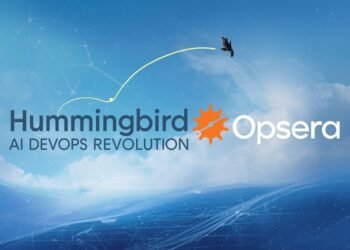AI-powered assistants have been embedded in enterprise workflows for years — answering queries, writing emails, summarizing meetings. But in 2025, these passive tools are being replaced by something far more capable: Agentic AI.
Where assistants wait for instructions, agentic AI acts independently. These intelligent agents don’t just respond — they think. They reason, plan, execute tasks across systems, and adjust their behavior based on outcomes.
The result? A seismic shift in how businesses operate, with a new class of AI operators automating complex workflows, reducing latency in decision-making, and unlocking levels of efficiency once thought impossible.
What Is Agentic AI? A Quick Primer
Agentic AI refers to AI systems that operate as autonomous agents, capable of achieving goals through multi-step reasoning, tool use, and self-directed action. It blends the power of large language models (LLMs) with orchestration logic and secure tool execution layers.
Key components:
-
Goal interpretation – Understand a broad directive, like “optimize cloud usage.”
-
Planning – Break the goal into a sequence of sub-tasks.
-
Tool use – Interact with APIs, databases, UIs, or CLI commands.
-
Reflection – Analyze results and iterate toward the objective.
In essence, agentic AI systems simulate the loop of perceive → decide → act → reflect, similar to a human operator — but with speed, scale, and 24/7 uptime.
How Agentic AI Works: The Planning–Execution–Reflection Loop
At the heart of most agentic systems is a repeating loop:
-
Planning:
The AI interprets the end goal and maps out a sequence of required steps. This could involve data gathering, approvals, changes, and actions across tools. -
Execution:
Each step is autonomously executed. This may involve calling APIs, issuing shell commands, writing files, sending emails, or using integrations like Zapier, Slack, or GitHub. -
Reflection:
The agent analyzes results of its actions and determines whether the goal is met or adjustments are needed. It loops back into planning if not.
This structure allows for adaptive behavior, where the agent revises its approach in real-time based on new data or unexpected outcomes — perfect for dynamic enterprise environments.
Use Cases: Where Agentic AI Is Reshaping the Enterprise
✅ DevOps and Platform Engineering
-
Self-healing pipelines that identify failing builds, diagnose the cause, roll back deployments, and open tickets with full context — no human needed.
-
Integration with Amazon Q Developer CLI, GitHub Copilot, and internal CI/CD tools.
✅ Cloud Cost Optimization
-
AI agents that scan usage reports, detect idle resources, and automatically resize or shut down underutilized instances based on tagging, thresholds, and policies.
✅ Compliance and Risk Management
-
Agents trained to read policy documents and scan procurement contracts for violations — flagging potential regulatory issues or data access risks.
✅ Sales and Proposal Generation
-
LLM agents that generate customized proposals, pull data from Salesforce, insert approved pricing, and send it with personalized follow-up sequences.
✅ Customer Support Automation
-
Agents that escalate support tickets by reading user sentiment, internal logs, and device metrics — often resolving the issue before a human even responds.
Why Enterprises Are Adopting Agentic AI Now
The rise of agentic AI is not just about automation — it’s about transforming business velocity and resilience.
Top drivers include:
-
Complexity at Scale: Managing modern enterprise infrastructure, compliance, and user expectations demands faster, more intelligent automation.
-
Staffing Gaps: Shortages in DevOps, security, and cloud expertise create pressure to automate decision-making.
-
LLM Maturity: OpenAI’s GPT-4o, Claude 3 Opus, and Amazon Q now offer sufficient reasoning and tool interaction capabilities to run agent loops.
-
Composable Architecture: Tools like LangChain, CrewAI, Autogen, and ReAct make it easier to build multi-agent systems with real-world context.
The Risks: Why Agentic AI Needs Guardrails
As powerful as they are, autonomous agents introduce real-world risk. Without governance, agentic AI can:
-
Overreach Tool Access – An agent given admin access to infrastructure can do irreversible damage from a bad prompt or hallucinated command.
-
Prompt Injection Attacks – If attackers can influence agent input (e.g., through user messages or logs), they can hijack its behavior.
-
Data Leakage – Agents operating across multiple platforms may inadvertently share sensitive data without role-specific boundaries.
To mitigate these risks, smart organizations are adopting:
-
Tool usage limits with scope-bound APIs and defined actions
-
Read/write separation, forcing human review before sensitive execution
-
Logging and observability into agent behavior
-
Simulation/testing layers before agents touch production systems
Where It’s Going: Co-Operators, Not Copilots
We’re moving past the age of copilots and into the era of co-operators. Instead of recommending actions, agentic AI will own and execute entire workflows end-to-end.
Emerging trends include:
-
Multi-agent collaboration: Specialized agents that hand off tasks to each other (e.g., planner → executor → validator).
-
Org-wide AI platforms: Enterprises are building internal “agent clouds” that securely house, route, and orchestrate task-specific agents.
-
AgentOps: The rise of new operational models for managing agent performance, reliability, and safety — akin to traditional DevOps for software.
What This Means for Your Business
Whether you’re running a cloud-native SaaS company or a highly regulated financial firm, agentic AI is already changing how enterprise work gets done.
What you need to do next:
-
Audit workflows that are ripe for delegation
-
Map tool access and determine safe automation layers
-
Start with single-purpose agents (e.g., deploy rollback, invoice check, log triage)
-
Iterate toward orchestration — bringing multiple agents together under policy-based control
Conclusion: Build the Foundation Before the Agents Take Over
Agentic AI in the enterprise isn’t about eliminating jobs — it’s about eliminating inefficiencies. By turning repetitive workflows into autonomous loops, businesses can operate faster, safer, and smarter.
But autonomy demands responsibility. Building scalable agentic systems means investing in the right architecture, controls, and mindset.
Today’s assistants are becoming tomorrow’s operators. And the enterprise that gets ahead of this curve will leave the rest in the dust.


















